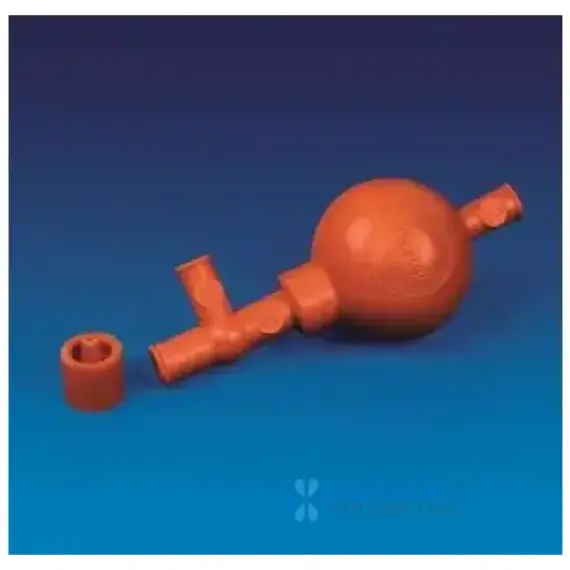Pipette Filler
Free!
A manual, valve-controlled bulb that attaches to serological and volumetric pipettes for safe, accurate liquid handling. It replaces mouth pipetting, delivers one-hand control, and reduces contamination risk. The secure, tapered connector fits common pipette sizes, while the non-slip design is easy to use with gloves. No batteries, no charging, minimal upkeep. A practical choice for teaching, QC, research, and environmental labs that need reliable, everyday liquid transfers.
Description
A pipette filler is a manual bulb with integrated valves that lets you safely aspirate and dispense liquids using glass or plastic pipettes. It replaces mouth pipetting, giving you controlled, one-hand operation for accurate transfers. The tapered connector grips most common serological and volumetric pipettes, while the textured body is easy to handle with gloves. Built for everyday lab work, it helps reduce contamination risk and supports good laboratory practice.
Key features and benefits:
-
Three-valve control for precise fill, release, and blow-out
-
Non-slip, ergonomic bulb for comfortable one-hand use
-
Tapered, secure nozzle fits a wide range of pipette sizes
-
Check valves help prevent backflow and accidental overfilling
-
Chemical-resistant construction; quick to clean and disinfect
-
Durable design with no batteries, charging, or maintenance
Typical uses:
-
Routine transfers, dilutions, and titrations
-
Cell culture media handling and reagent preparation
-
Water, food, and environmental testing
-
Teaching labs and quality-control workflows
How it compares:
-
Versus simple bulbs: better speed and control thanks to dedicated valves
-
Versus motorized pipette controllers: lighter, quieter, lower cost, and always ready to use; ideal as a dependable bench tool or backup
Safety and compliance notes:
-
Eliminates mouth pipetting to align with standard lab safety practices
-
Suitable for GLP-oriented workflows where controlled manual transfers are required
Choose this for a robust, affordable, and intuitive way to handle liquid transfers across research, clinical, and industrial labs.




